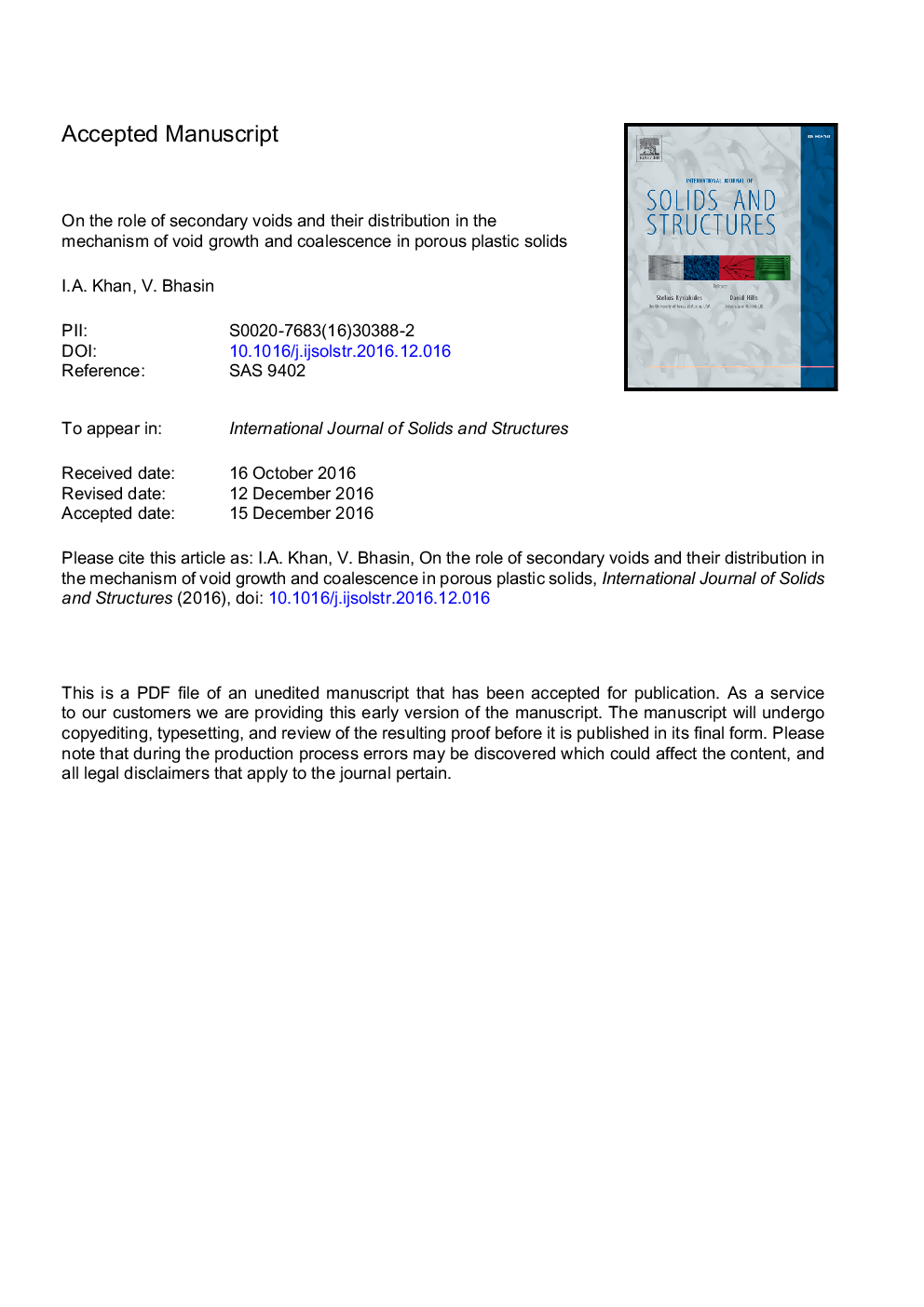| Article ID | Journal | Published Year | Pages | File Type |
|---|---|---|---|---|
| 4922708 | International Journal of Solids and Structures | 2017 | 40 Pages |
Abstract
Detailed three-dimensional finite element based cell model studies are carried out to understand the role of secondary voids and their distribution in the mechanism of void growth and coalescence in a porous plastic solid. In contrast to most of the previous studies, the two populations of voids (primary and secondary) are modeled explicitly, with more realistic arrangements of the later. Numerical studies revealed that the spacing of the secondary voids sets the length scale at which localization of plastic flow occur. For a given volume fraction of the secondary voids, the mesoscopic ductility depends on the void distribution. In particular, the void arrangements leading to closely spaced secondary voids result in an early onset of plastic flow localization. The mesoscopic ductility, for a fixed arrangement of secondary voids, is observed to depend on the initial volume fraction and also on the location of the secondary voids in the ligament between the primary voids. For the stress triaxiality regime (1 ⤠T ⤠3), and for the various distributions of the secondary voids analyzed in the present study, some variation in the total void volume fraction corresponding to the onset of flow localization is observed. The variation, however, is not so large as to forbid associating the critical void volume fraction with the void coalescence criterion. Thus, as a practical approach, an average value of this critical porosity may serve as the criterion for simulating accelerated void growth accompanying coalescence in a porous plastic solid with two populations of voids, using some phenomenological constitutive framework.
Related Topics
Physical Sciences and Engineering
Engineering
Civil and Structural Engineering
Authors
I.A. Khan, V. Bhasin,
